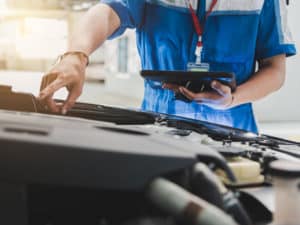The Best Tips For Maintaining An Older Car
Perhaps you feel sentimental towards a particular vehicle and wish to keep it running for as long as possible. Maybe you have a vintage beauty that you want to be able to drive forever? Or maybe, quite simply, you don’t believe in fixing something that’s not broken. There are many reasons why you’d want to keep using an older vehicle instead of replacing it.
As the quality of vehicle manufacturing has significantly increased throughout the past two decades, more and more people are holding on to the vehicles they’ve had for a long time. These tips for maintaining an older car will prolong the life of your vehicle for many more years to come.
Keep Up With Your Checkups And Maintenance
 The easiest and most beneficial tip for maintaining an older car comes down to staying in line with your manufacturer’s recommendations and following your vehicle’s maintenance schedule, as it helps prolong its useful years.
The easiest and most beneficial tip for maintaining an older car comes down to staying in line with your manufacturer’s recommendations and following your vehicle’s maintenance schedule, as it helps prolong its useful years.
Take your car to a trusted ASE certified local auto garage at least once a year to have a professional give it a proper visual inspection. You’ll be able to not only fix everything that needs attention, but you’ll be able to catch any small problems before they become major issues.
During scheduled maintenance, your mechanic should change the oil and air filters, inspect your brakes, check all fluid levels, inspect spark plugs and coolant, check the tires’ pressure and rotate them as recommended by the manufacturer. This, along with several other small tweaks, will ensure that all issues are flagged ahead of time. Your car will be able to stay on the road safely for much longer.
Treat It Well On The Road
There are few things that can ruin your vehicle’s useful life as much as bad driving habits, such as hard braking and over accelerating. These two things alone increase the amount of wear and tear the most.
Not using your car enough can also cause issues. By only driving short distances (to the grocery store, church, kids to school, etc) periodically, will prevent your car from reaching its full operating temperature, which contributes to excess wear and tear. You must also make sure to repair exterior scratches before they rust in order to ensure your vehicle remains looking as good as new for years to come.
Replace Your Timing Belt After 100,000 miles
The timing belt controls the time of the valves in an internal combustion engine. After 100,000 miles, it’s important to have it replaced, as wear and tear make it easier for it to break and can leave you stranded in the middle of the road. Some vehicle manufacturers recommend the belt be replaced as early as 60,000 to 80,000 miles
If your car comes with an interference engine, this becomes even more urgent as your engine could be irreparably damaged if the timing belt were to break while you’re driving. Even if you have a non-interference engine, any malfunctioning or breakage of the timing belt can lead to costly repairs and even an emergency call for someone to come pick you up and your car would need to be towed to an auto repair facility.
Fuel System Cleaning To Remove Gunk Once A Year
As your vehicle runs; gunk, carbon and residues accumulate inside the fuel system, engine, fuel injectors and catalytic converter, which are expensive and inconvenient parts to repair or replace. In order to avoid replacing them, you can ensure they stay free of build-up by performing a professional fuel induction system cleaning once a year.
Proper Care Ensures The Best Driving Experience
Why buy a new car when you can keep your older one running just as smoothly? By following these simple tips for maintaining an older car, you can ensure it will stay functioning for many years to come, while helping you save money and enjoying many more years of value.

Leave a Reply
You must be logged in to post a comment.